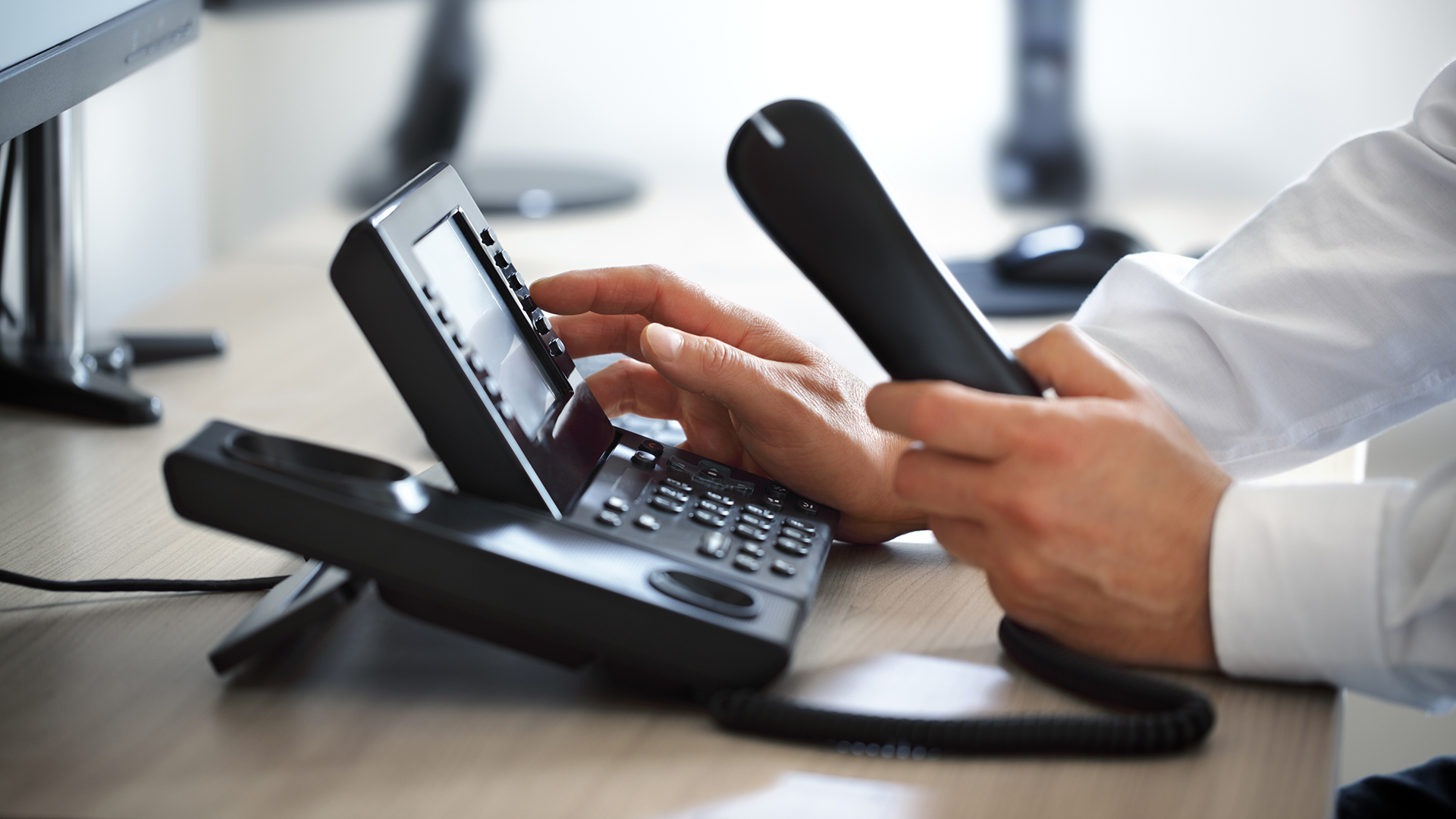Best business voicemail messages: How to record a professional voicemail
The best tips for recording your voicemail message

A professional, engaging, and effective voicemail greeting is a more important communication tool than it may first appear. After all, if you are unable to answer the phone, your voicemail message may be a contact’s first impression of you. If your voicemail greeting is hard to understand, inaccurate, or incomplete, it could negatively affect a professional connection.
Fortunately, recording a simple, professional voicemail is quite easy. In this article, we’ll go over the best business voicemail greeting tips to help you sound confident and professional. Or check out our guide to the best VoIP providers if your business is looking for an affordable alternative to a regular phone service.
Step 1: Identify yourself
Why you can trust TechRadar
If a phone number you are trying to reach goes to voicemail, the first thing you think is probably “Did I dial the right number?” That’s why you’ll want to say your name and your company in your voicemail right away, so callers aren’t left wondering if they misdialed.
It may make sense to include your job title in this information as well, depending on your job.
Examples:
- “You’ve reached Jane Smith, Customer Service Lead at Forrest Industries.”
- “Hi, this is John Miller at Garcia, Miller, and Brown.”
Step 2: Acknowledge their time
Playing phone tag is a routine part of doing business, but it can still be frustrating. One simple way to smooth over any annoyance is to acknowledge the caller’s time, either by thanking them for calling or by apologizing for not being available.
Examples:
- “I’m sorry to miss your call.”
- “Thank you for calling.”
- “I’m sorry, but I’m away from my desk at the moment.”
Step 3: Include specific next steps
Many people put something like “Leave your name and number and I’ll call you back” in their voicemail, without really thinking it through. It’s worth taking some extra time to think specifically about the best way to instruct callers on how to move forward.
This will probably depend on your specific job circumstances. If you spend a lot of time in the field, you may want to instruct callers to try you on your cell phone. If you receive a lot of urgent calls, you may want to offer an alternative contact for callers to reach out to. There may be a company website or social media page you can refer callers to that might be able to answer their question.
Examples:
- “If this is an urgent matter, please call Kelly at [phone number]. Otherwise, leave your name and number.”
- “Please leave your name and phone number, or you can email me at jane@forrest.com.”
- “If you’re calling to register for our summer drama camp, please visit our website at [URL].”
Step 4: Offer a timeline
It may not make sense for your job, but it can be helpful for some if you offer a timeline of when a caller can expect you to return their call. If you receive a high volume of calls and often can’t return them for a day, this can help to manage a caller’s expectations so they aren’t upset when you don’t call them back in an hour.
Examples:
- “I will get back to you as soon as possible.”
- “I will return your call by the end of the week.”
- “Someone from our team will reach out within 24 hours.”
Step 5: Use humor (if appropriate)
If it’s appropriate for your industry, using humor in your voicemail greeting can show off your personality and be memorable to prospective contacts.
Remember that a little goes a long way. You don’t want your jokes to come at the expense of the information the caller actually needs or the caller’s time.
A voicemail where you pretend to answer the phone for an entire minute before revealing it’s fake probably isn’t going to go over well with anyone.
Examples:
- “I’m away from my desk right now, searching for signs of life on an alien planet. Leave your name and number and I’ll return your call when Scotty beams me back up.”
- “I can’t answer the phone right now, and I promise it’s not because I’m doomscrolling Twitter.”
- “I can’t take your call right now, probably because I’m in the studio taking the amazing portraits you’ll see me post on Instagram tonight.”
Step 6: Keep it short
It’s very frustrating to have to sit through a long voicemail of irrelevant information when all you want to do is leave a quick message. Avoid annoying your callers by keeping your voicemail message as short as possible.
Step 7: Record!
Even if you are a confident speaker, it can be helpful to write out a script of what you are going to say before recording your voicemail greeting. That way, you know you won’t leave out any important information or stumble through your words.
Speak slowly, clearly, and confidently when recording your message, and don’t rush through information a caller might want to write down, like an email address or alternative phone number.
Step 8: Update your message for vacation and extended leave
Just like you would use an automated email reply, you should update your voicemail message if you’re going to be out of the office for an extended period of time. Otherwise, contacts might not have their problems resolved or questions answered in a timely manner—and may blame you for dropping the ball.
When recording a vacation or extended leave message, make sure you include the dates you will be out of the office and who callers should reach out to in the meantime. Be specific with these requests and set expectations. For example, don’t say you will be available by email if you’re only intending to deal with urgent requests. If most requests will have to wait until you return to the office, say so.
It can show some personality to include a little bit about where you’re going or what you are doing, if you feel comfortable sharing. However, you are under no obligation to give those details. People taking vacations and leave is a standard part of doing business, and your professional contacts shouldn’t require any more information than that.
Examples:
- “Hello, you’ve reached Jane Smith. I’m out of the office from July 5th to July 12th. If this is an urgent matter, you can email me at jane@forrest.com. Otherwise, leave a message and I’ll return your call when I’m back in the office on July 13th.”
- “This is Sam Rogers. I’m on leave until December to finally write that book, but you can contact the department office at [phone number] with any inquiries.”
- “You’ve reached Audrey Jones. I’m on leave until October 15th. Please call back on or after the 15th, or call Andy at [phone number] for urgent matters.”
Summary
Writing a professional voicemail is a simple but effective way to make a good impression on contacts. Your voicemail should be simple, short, and include all relevant information.
For more information about setting up a phone service for your business, check out our guide to choosing a small business VoIP service. Or, check out our list of the best business phone systems.
Sign up to the TechRadar Pro newsletter to get all the top news, opinion, features and guidance your business needs to succeed!
Sarah James is a freelance writer in Los Angeles. She has written about creativity, culture, and technology for brands like TechRadar, Submittable Content For Creatives, The Billfold, Pittsburgh City Paper, The Toast, and more.
